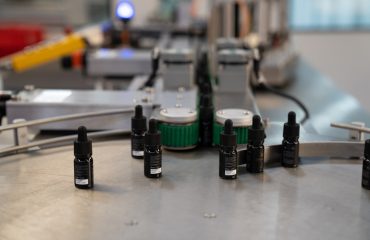In a world increasingly conscious of hygiene and infection control, the development of antibacterial surfaces represents a significant leap forward. Among these advancements, antibacterial steel surfaces stand out as a durable and effective solution for various applications, from healthcare settings to food preparation areas. This post delves into the science, benefits, limitations, and future potential of this innovative material.
The Science Behind Antibacterial Steel
Antibacterial steel isn’t simply regular stainless steel with a fancy name. Its antimicrobial properties are achieved through various methods, primarily focusing on inhibiting bacterial growth. One common approach involves incorporating antimicrobial agents directly into the steel during the manufacturing process. These agents, often silver ions or copper alloys, are released slowly over time, creating a hostile environment for bacteria. The silver ions, for example, disrupt bacterial cell membranes and interfere with their metabolic processes, leading to their inactivation. The effectiveness of these agents depends on factors such as concentration, the type of bacteria, and environmental conditions. Another method involves creating a surface texture that physically inhibits bacterial adhesion. Microscopic surface modifications can prevent bacteria from forming biofilms, which are complex communities of microorganisms that are notoriously difficult to remove.
Applications of Antibacterial Steel in Healthcare
The healthcare industry is a prime beneficiary of antibacterial steel’s antimicrobial properties. Hospitals and clinics are constantly battling against healthcare-associated infections (HAIs), which pose a significant threat to patient safety. Antibacterial steel surfaces in operating rooms, patient rooms, and other high-traffic areas can significantly reduce the risk of cross-contamination. Surfaces like countertops, sinks, handrails, and medical equipment made from this material can contribute to a cleaner, safer environment. The durability of stainless steel is also crucial in these settings, as it can withstand rigorous cleaning and sterilization procedures without degradation.
Antibacterial Steel in Food Preparation and Handling
The food industry faces similar challenges in maintaining hygiene and preventing foodborne illnesses. Antibacterial steel surfaces in kitchens, food processing plants, and restaurants offer a significant advantage. Work surfaces, equipment, and storage containers made from this material can help minimize bacterial contamination, enhancing food safety and reducing the risk of outbreaks. The non-porous nature of stainless steel also makes it easy to clean and sanitize, preventing the harboring of bacteria and other microorganisms.
Limitations and Considerations of Antibacterial Steel
While antibacterial steel offers significant advantages, it’s crucial to understand its limitations. The antimicrobial effect isn’t absolute; it reduces bacterial growth but doesn’t eliminate it entirely. Regular cleaning and disinfection are still essential for maintaining hygiene. The effectiveness of the antimicrobial agents can also diminish over time, requiring periodic replacement or surface treatment. Furthermore, the cost of antibacterial steel is generally higher than that of standard stainless steel, which may be a limiting factor for some applications. Finally, while extensive research supports its efficacy, more long-term studies are needed to fully understand the long-term impact and potential environmental effects of the antimicrobial agents used.
The Future of Antibacterial Steel and Emerging Technologies
Research and development in antibacterial steel continue to advance. Scientists are exploring new antimicrobial agents and surface modification techniques to enhance the effectiveness and longevity of these materials. Nanotechnology is playing a crucial role, with researchers developing nanoscale coatings that exhibit superior antimicrobial properties. The incorporation of self-cleaning functionalities, such as photocatalytic coatings, is also a promising area of research. These coatings use sunlight or UV light to break down organic matter and pollutants, further enhancing the hygiene of the surface. The future likely holds even more effective and versatile antibacterial steel surfaces, playing an increasingly important role in maintaining hygiene and public health.
In conclusion, antibacterial steel surfaces represent a valuable tool in the fight against bacteria and infection. While not a silver bullet, its combination of durability, antimicrobial properties, and ease of cleaning makes it a significant advancement in hygiene and infection control across various sectors. As research continues, we can expect even more innovative and effective applications of this technology in the years to come.
Tags: antibacterial steel, stainless steel, antimicrobial steel, hygiene, infection control




